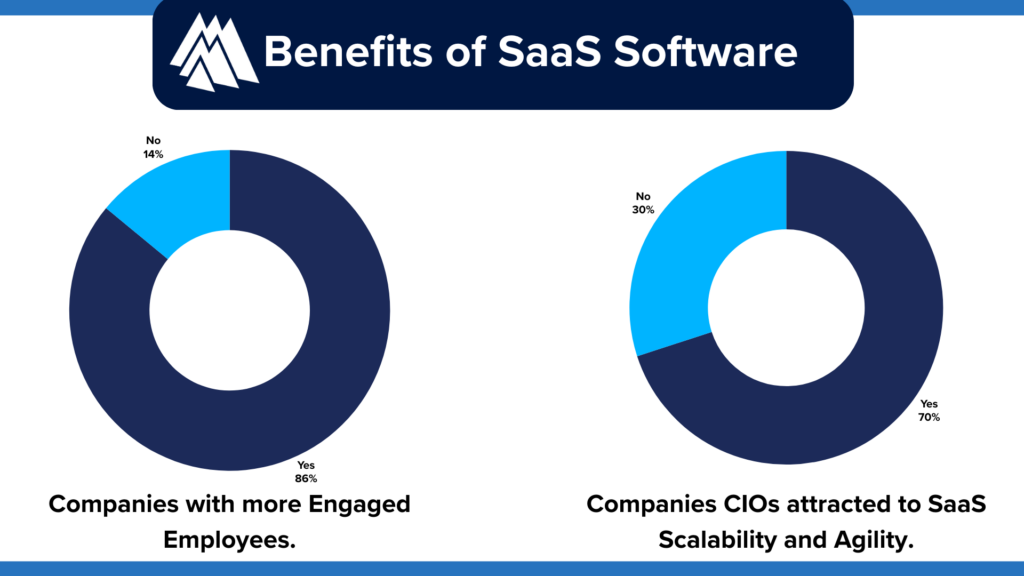Software licenses negotiation enables businesses to secure optimal software agreements aligned with both current and future operational objectives. SaaS provider solutions have become indispensable in the modern business landscape, playing a pivotal role in driving productivity, efficiency, and competitive advantage. However, the costs associated with proprietary software licensing can have significant financial implications for organizations. Effective negotiation of software contracts enables businesses to secure optimal agreements aligned with both current and future operational objectives.
This guide outlines pragmatic strategies for negotiating favorable software licensing terms and mapping relevant considerations across the procurement lifecycle.
Key Topics:
- Internal needs assessment
- Vendor analysis
- Licensing model evaluation
- Total cost of ownership calculations
- Value-focused negotiation tactics
- Contract term optimization
- Renewal planning and negotiation
- Performance benchmarking
- Understanding Business Software Needs

10 Tips for Negotiating Software Licenses for Your Business
Pre-Negotiation Preparation
1. Assessing Business Needs and Requirements
Before entering into software legal contract negotiations, it’s crucial for businesses to thoroughly assess their needs and requirements. This involves:
- Conducting an internal assessment: Evaluate current software solutions, identify gaps or inefficiencies, and determine areas where new software could enhance operations or productivity.
- Consulting key stakeholders: Gather input from relevant departments or teams to understand their specific software requirements and preferences.
- Defining objectives: Clearly outline the objectives and goals you aim to achieve through the implementation of new software. Whether it’s improving efficiency, enhancing customer experience, or reducing costs, having clear objectives will guide your negotiation strategy.
2. Research Software Vendors and Offerings
Effective negotiation starts with comprehensive research on software vendors and their offerings. This includes:
- Identifying potential vendors: Compile a list of software vendors that offer solutions aligned with your business needs and requirements.
- Analyzing product offerings: Evaluate the features, functionalities, and capabilities of each software solution to determine their suitability for your business.
- Reviewing customer feedback: Research customer reviews, case studies, and testimonials to gain insights into the vendor’s reputation, customer satisfaction levels, and reliability. If a customer agrees on effectivity, you can be more confident in your service agreement.
- Comparing pricing and contract terms: Gather information on pricing models, licensing options, and contract terms from multiple vendors to understand market trends and identify potential negotiation opportunities.
3. Identify Key Features and Functionalities
Once you’ve narrowed down your list of potential vendors, it’s essential to identify the key features and functionalities that are crucial for your business. This involves:
- Prioritizing requirements: Determine which features and functionalities are essential for addressing your business needs and objectives.
- Creating a feature checklist: Develop a checklist of must-have features and functionalities that you can use as a reference during vendor evaluations and negotiations.
- Identifying customization options: Assess whether the software can be customized or tailored to meet your specific requirements, both now and in the future as your business evolves. Employing subscription service-based software as a service can have customizability depending on subscription models.
4. Gathering Information on Pricing and Contract Terms
Gathering information on pricing and contract terms is essential for understanding the financial implications of the software investment and negotiating favorable terms. This includes:
- Requesting pricing quotes: Reach out to vendors to obtain pricing structure for their software solutions, including any recurring fees, detailed costs, or additional expenses. Clarify payment terms and detailed cost of your license software.
- Reviewing contract terms: Obtain sample contracts or licensing agreements from vendors and carefully review the terms and conditions, paying attention to factors such as licensing rights, automatic renewal clauses, termination clauses, and support services. Make sure that the contract period is underlined in your license agreements.
- Seeking clarification: If there are any unclear or ambiguous aspects of the pricing or contract terms, don’t hesitate to seek clarification from the vendor before proceeding with negotiations.
By thoroughly preparing and gathering information in these areas, businesses can enter into software license negotiations with a clear understanding of their needs, the vendor landscape, and potential negotiation opportunities, setting the stage for a successful outcome.
Businesses should leverage free trials, product demos, and user review analysis to evaluate factors like usability, scalability, security, and suitability for business-specific workflow needs.
Vendor screening criteria may include:
- Implementation and training resources
- Stability and reputation
- Data protection and privacy protocols
- Support responsiveness and channels
- Understanding licensing models
Software licensing models dictate cost structures and critical factors like platform dependence, customizability, and upgrade flexibility. Common licensing approaches include
Subscription:
- Pay the recurring fee for time-bound access
- Lower initial spend
- Includes ongoing support
- Facilitates adjustments
Perpetual:
- One-time upfront license purchase
- Higher initial cost
- Self-managed support needs
- Enhanced customization potential
Usage-based:
- Pay per user/transaction etc.
- Aligns cost to usage
- Unpredictable expenses
Businesses should consider total lifecycle costs, growth projections, and risk tolerance when selecting the optimal model.
5. Calculate Total Cost of Ownership
The total cost of ownership (TCO) provides a holistic understanding of direct and indirect software expenditures required. This should guide negotiation priorities and budget planning.
TCO components include:
- Initial Purchase Price
- Operating Cost
- Maintenance Cost
- Training Needed
- Item Lifespan
By comparing the TCO with the projected ROI, businesses can determine the cost-effectiveness and overall value proposition of the software solution, guiding negotiation priorities and budget planning decisions.
SaaS Security and Support Considerations
Cloud-based solutions enable business-enhanced flexibility. Cloud service agreements however can be daunting compared to a simple SAAS agreement. For cloud-based SaaS solutions, buyers should thoroughly evaluate:
- Data security: Encryption protocols, access controls, third party/offshore storage use, redundancy mechanisms. In case of a data breach, make sure to underline the data collected to protect both you and your customers. Data ownership should also be outlined in the cloud service agreement.
- Service reliability: Historical uptime statistics, infrastructure redundancy mechanisms. Cloud service providers should be upfront about service availability and possible disruptions.
- Support: Channel availability (email/phone/chat), response time service level agreement, and training resources. Service agreement SaaS providers provide support services to help customers have the best experience possible.
- Customization: Ease of integration with complementary apps, process modification flexibility.
Crafting a Negotiation Strategy
Approaching contract negotiations equipped with a combination of leverage points and flexibility allows businesses to secure favorable terms in their SAAS contracts.
Key principles include:
- Leading with value over price
- Quantifying ROI for stakeholders
- Prioritizing must-haves in your SAAS agreement checklist
- Leveraging competitor alternatives
- Conceding non-critical aspects
Businesses should document all communications, most agreements, and concessions to prevent misunderstandings and enable consistent tracking against negotiation priorities. Take note of the effective date of the licensing agreement.
Key Software Licensing Terms
In addition to pricing, businesses need to negotiate framework agreements governing software usage restrictions, intellectual property, service reliability, data security, and exit provisions. It should be underlined in the entire agreement applicable laws part in the SAAS application. This is to better promote regulatory compliance.
Negotiation Tactics
6. Stay firm on Essential Terms
Staying firm on essential terms during software license negotiations is crucial to ensuring that the agreement aligns with your business objectives and protects your interests. Saas services should also adhere to industry benchmark parameters to keep up with the competition.
- Identify Key Priorities: Determine which terms and conditions are non-negotiable and essential to your business objectives and success. State this clearly with your service provider to prevent misunderstanding.
- Communicate Clearly: Clearly communicate your stance on essential terms to the vendor, emphasizing their importance and the potential consequences of not meeting them. Part of service-level agreement negotiations is being clear in communication so the other party does not misunderstand.
- Maintain Consistency: Stay consistent and unwavering on essential terms throughout the negotiation process, avoiding unnecessary concessions that could compromise your interests.
- Use Leverage: Use leverage, such as alternative options or competitive offers, to reinforce your position and negotiate more effectively on essential terms. Consult with your legal team to benefit the most out of your SAAS service.
By staying firm on essential terms, you can ensure that the final agreement reflects your business priorities and provides the necessary protections and benefits required for a successful software implementation.
7. Be Open to Compromise on Non-critical aspects
- Prioritize Needs vs. Wants: Distinguish between essential requirements and preferences that are nice to have but not critical to achieving your business performance objectives.
- Identify Trade-offs: Identify areas where you can afford to compromise or make concessions without significantly impacting your business goals or bottom line. Depending on trade-offs, customize your service tier SAAS model.
- Seek Win-Win Solutions: Look for mutually beneficial solutions that address the vendor’s interests while still meeting your needs, fostering a positive and collaborative negotiation environment. This creates agreements that companies will respect.
- Focus on Value: Emphasize the value gained from concessions made on non-critical aspects, ensuring that compromises contribute to achieving overall objectives. Most SAAS agreements can be negotiated as long as it benefits all.
8. Document all Communications and Agreements
Documenting all communications and agreements during software license negotiations is essential for clarity, accountability, and dispute resolution.
- Keep Detailed Records: Document all communication, including meetings, emails, and phone calls, to ensure a clear record of discussions, decisions, and master service agreements.
- Use Written Agreements: Formalize agreements and commitments in writing, using contracts, memorandums of understanding (MOUs), or other legal documents to provide clarity and prevent misunderstandings. Make sure to confirm the intellectual property rights of any information on your software as a service subscription model.
- Confirm Understanding: Confirm understanding and license agreement on key points verbally and in writing to avoid misinterpretation or disputes later on. Clarify authorized users of your software provider, who holds customer data, and the established date and subscription tier.
- Review Regularly: Regularly review and update documentation to reflect any changes or updates to agreements, ensuring alignment with current business needs and objectives.
This documentation serves as a valuable resource for reference, verification, and enforcement of contractual obligations, ultimately contributing to the successful outcome of software license negotiations.
9. Plan for Renewals
Proactively planning for license renewals enables businesses to lock in continued savings, cater to evolving needs via customizations, and avoid workflow disruptions.
Renewal negotiation strategies include:
- Regular user feedback consolidation
- Performance benchmarking
- Requirements re-validation
- Market rate analysis
- Leveraging renewal opportunities through yearly subscription model
- Businesses shouldn’t instinctually renew but periodically evaluate if migrating to alternate solutions represents a strategic opportunity.
By planning for renewals and evaluating options systematically, businesses can ensure that their software investments continue to deliver value, meet evolving needs, and drive business success.
10. Continue Improvement Post-Implementation
Ongoing software performance tracking and process optimization allow businesses to maximize ROI. Strategies include:
- Process optimization: Streamline workflows to leverage automation capabilities
- Performance benchmarking: Establish and monitor metrics like contract adherence, adoption rates, and impact on business metrics.
- Market Monitoring: Track tech advancements, policy changes UB SAAS service, and competitor SAAS provider’s offerings to identify future negotiation opportunities.
- Upgrade planning: Evaluate continuity of on-premise vs cloud-based solutions. Plan migration strategy of customer data when migrating to another service SAAS.
By implementing these strategies for continual improvement post-implementation, businesses can optimize the performance and value of their software solutions, drive innovation, and maintain a competitive edge in the market.
FAQs
How do you negotiate a licensing deal?
Negotiating a licensing deal involves getting prepared by understanding your needs and the software or technology you want to license, then discussing your goals with the company you’re negotiating with.
Once you’ve reached an agreement, you’ll put it all in writing in a contract or agreement, review it carefully, and sign it if everything looks good. Afterward, you’ll stay connected with the company to ensure everything goes smoothly.
How do I ensure I get the right level of support?
Clearly define your support needs and expectations upfront. Negotiate for specific service level agreements (SLAs) that guarantee the level of support you require, including response times and escalation procedures.
What if the vendor won't budge on certain terms?
Consider whether the terms are truly non-negotiable or if there’s room for compromise. If necessary, explore alternative vendors or solutions that better align with your requirements.
Final Takeaway
Developing a comprehensive procurement strategy is crucial for optimizing value in software investments while retaining flexibility to accommodate evolving business needs. By evaluating solutions against current and projected requirements, calculating lifecycle costs, employing strategic negotiation tactics, securing preferential terms and conditions, planning for change accommodations, and monitoring solution performance, businesses can shift from reactive to proactive technology management. This enables intelligent software investments that provide a robust digital infrastructure to unlock efficiency and scale new heights of innovation.
Ready to elevate your B2B marketing?
We help leading business-to-business brands hit their marketing goals. Get in touch to learn how Altitude Marketing can help you reach your peak performance.





